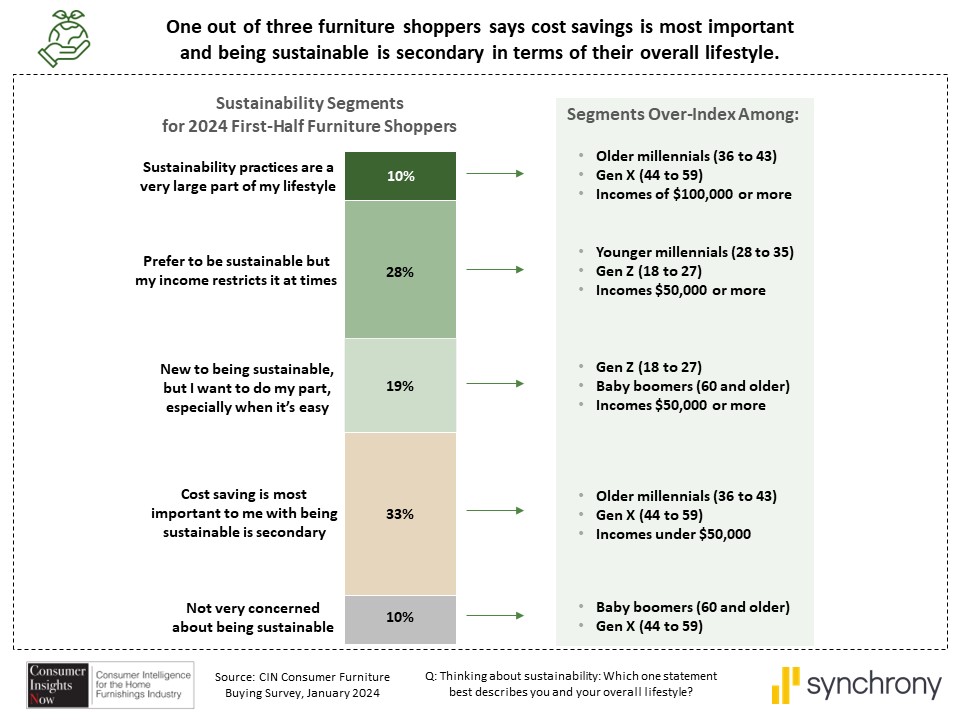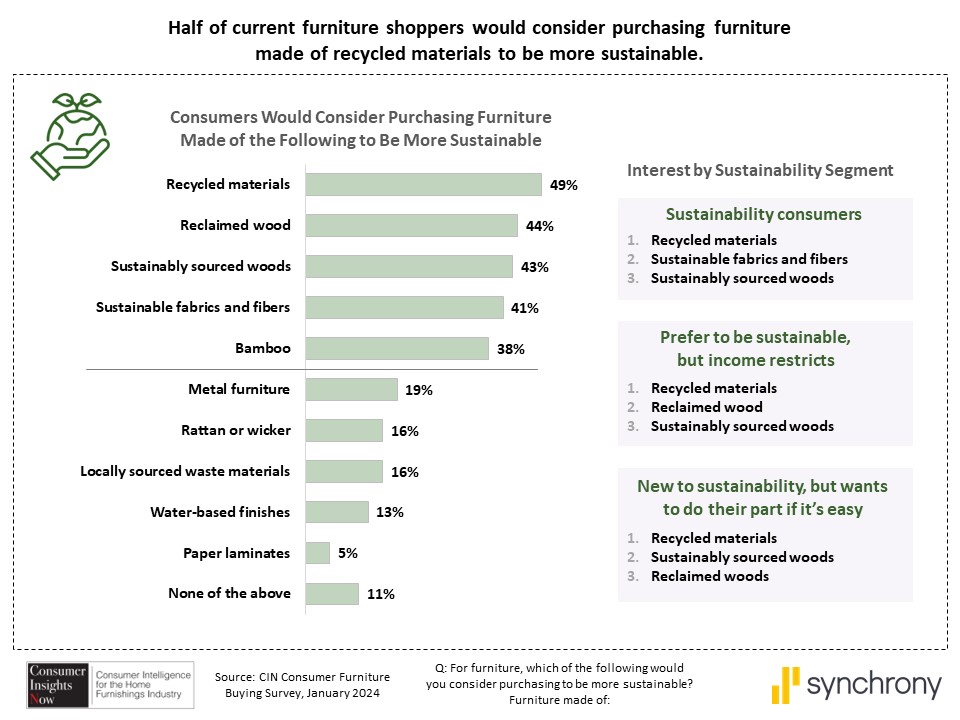Many want to purchase eco-friendly products but find they may be unaffordable
HIGH POINT — Anyone doubting the importance of sustainability in the furniture industry need look no further than our latest Consumer Insights Now research on buying plans for the first half of 2024.
Not only are consumers aware of the importance of sustainability, they also prefer to buy sustainable products whenever they can.
Some 57% of those surveyed said that they were interested in sustainable products, with 10% of those saying such practices are a big part of their lifestyle and 28% saying that they prefer to be sustainable although their income can sometimes restrict buying such products. Another 19% said they are new to buying sustainable products but want to do their part when it’s easy.
Another third of those surveyed said cost savings is most important, while sustainability comes in second. Another 10% said they were not very concerned about sustainability.

Not surprisingly, income levels were a factor, with those in the top 10% bracket with incomes of $100,000 or more and those in the next two brackets 28% and 19% respectively earning $50,000 or more.
Those who consider sustainability secondary to price earned less than $50,000.
Some 30% of those surveyed said they never take the environment into consideration when buying new furniture, compared to 62% who sometimes do and 8% who said they always do.
For those interested in buying furniture with sustainably sourced furniture, a third said they were most interested in buying upholstery with sustainably sourced materials, followed by occasional tables and mattresses, 24% each; area rugs, 23%; bedroom furniture, 21%; and recliners and outdoor furniture, 18% each. This was followed by dining room and office furniture, each 15%, and entertainment furniture, 12%.
Some of the answers that environmentally conscious consumers gave relating to factors they consider when buying furniture include:
+ Finding products and pieces that are sourced in a responsible way or made from reused resources
+ I try to get items made out of bamboo instead of being made out of wood
+ I want to know where it comes from. Is it cutting down a lot of trees?
+ I try to make sure the packaging is at a minimum
+ Preferably made in the USA
+ I make sure the furniture is quality and will last a long time to prevent waste
And consumers would consider furniture to be more sustainable if it was made with recycled materials, 49%; reclaimed wood, 44%; sustainably sourced woods, 43%; sustainable fabrics and fibers, 41%; and bamboo, 38%. Other materials consumers considered to be sustainable include metal, 19%; rattan or wicker, 16%; locally sourced waste materials, 16%; water-based finishes, 13%; and paper laminates, 5%.

The survey also looks at sustainable labeling that consumers are most familiar with including FSC certified wood, LEED AP, Energy Star, Greenguard and Intertek, Green Leaf.
Obviously, this presents an opportunity for retailers and salespeople to educate consumers about the different products they are carrying in their stores that have a sustainable story. In partnership with the manufacturer, they can help tell this story through labeling, signage and other marketing materials that make for a compelling reason to buy such products.
We hope this information encourages those who may have been on the fence about sustainable products to take a harder look at how they can take part in the initiative, which we anticipate will only gain momentum as consumers young and old alike look to do their part in helping preserve the planet for themselves, their children and grandchildren. It’s a story all generations can benefit from if we only make the effort.





